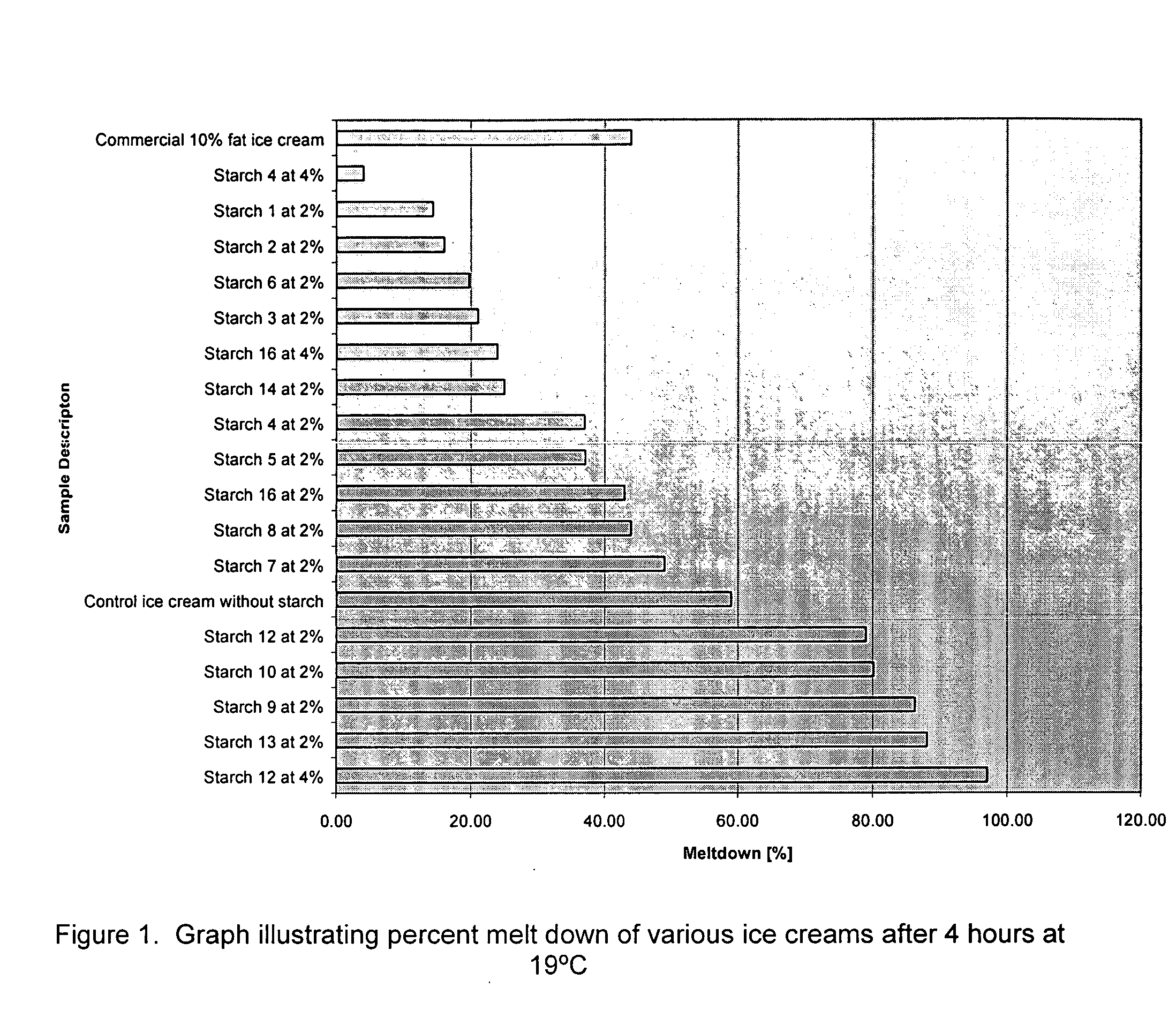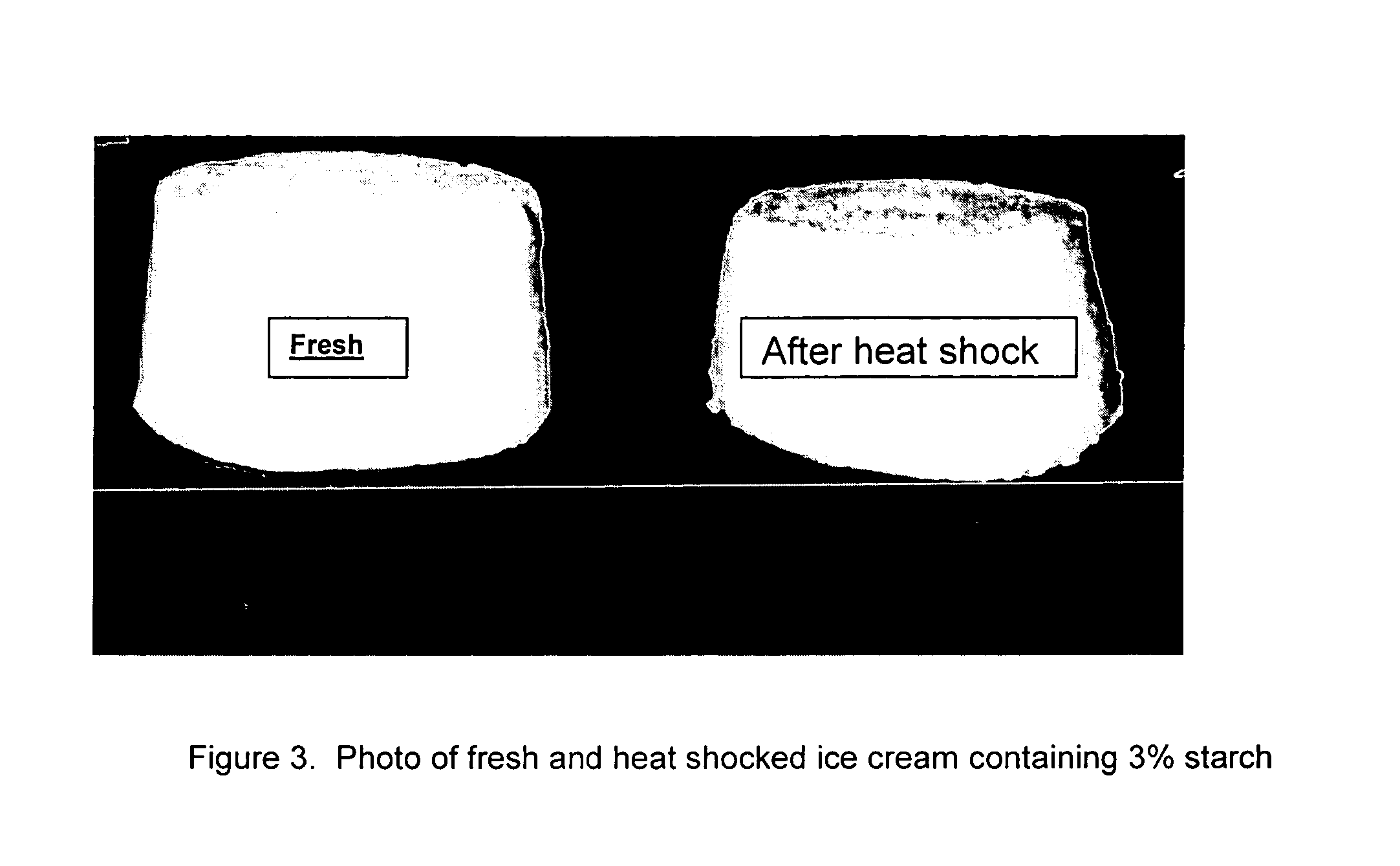Starch for frozen desserts
a technology for frozen desserts and starch, which is applied in the field of starch for frozen desserts, can solve the problems of small temperature variation, ice crystal growth in the product, and partial or even substantial defrosting of the product, and achieve the effect of reducing the expansion and shrinkage of the ice cream
- Summary
- Abstract
- Description
- Claims
- Application Information
AI Technical Summary
Benefits of technology
Problems solved by technology
Method used
Image
Examples
Embodiment Construction
The starch base material used for the present invention may be derived from any source, including cereal or root starches. Typical sources for the starches are cereals, tubers, roots, legumes and fruits. Native starch sources include, for example, any variety of corn (maize), pea, potato, sweet potato, banana, barley, wheat, rice, oat, sago, amaranth, tapioca, arrowroot, canna, sorghum and waxy and high amylose varieties thereof. As used herein, “waxy” includes starches containing no more than about 10% amylose by weight. As used herein, the term “high amylose” includes starches containing at least about 40% by weight amylose. As used herein, the term “amylose-containing” includes those starches containing at least about 10% by weight amylose. Preferably, the starch base material is an amylopectin starch such as a waxy corn starch or amylose-containing starch.
The granular starch base can be one that has been lightly converted or hydrolyzed to a water fluidity (“WF”) of about 0 to...
PUM
 Login to View More
Login to View More Abstract
Description
Claims
Application Information
 Login to View More
Login to View More - R&D
- Intellectual Property
- Life Sciences
- Materials
- Tech Scout
- Unparalleled Data Quality
- Higher Quality Content
- 60% Fewer Hallucinations
Browse by: Latest US Patents, China's latest patents, Technical Efficacy Thesaurus, Application Domain, Technology Topic, Popular Technical Reports.
© 2025 PatSnap. All rights reserved.Legal|Privacy policy|Modern Slavery Act Transparency Statement|Sitemap|About US| Contact US: help@patsnap.com



